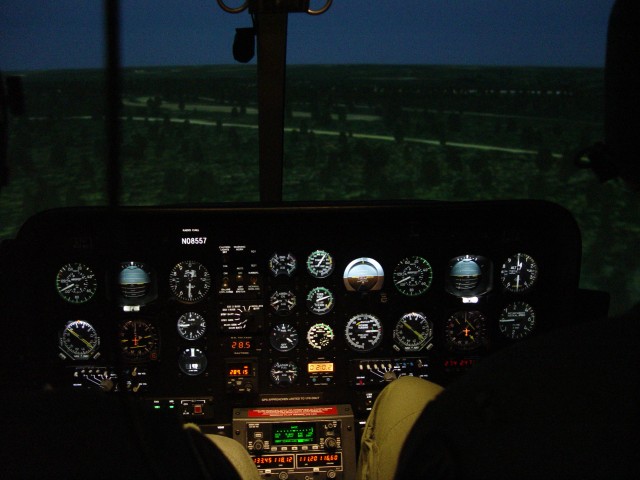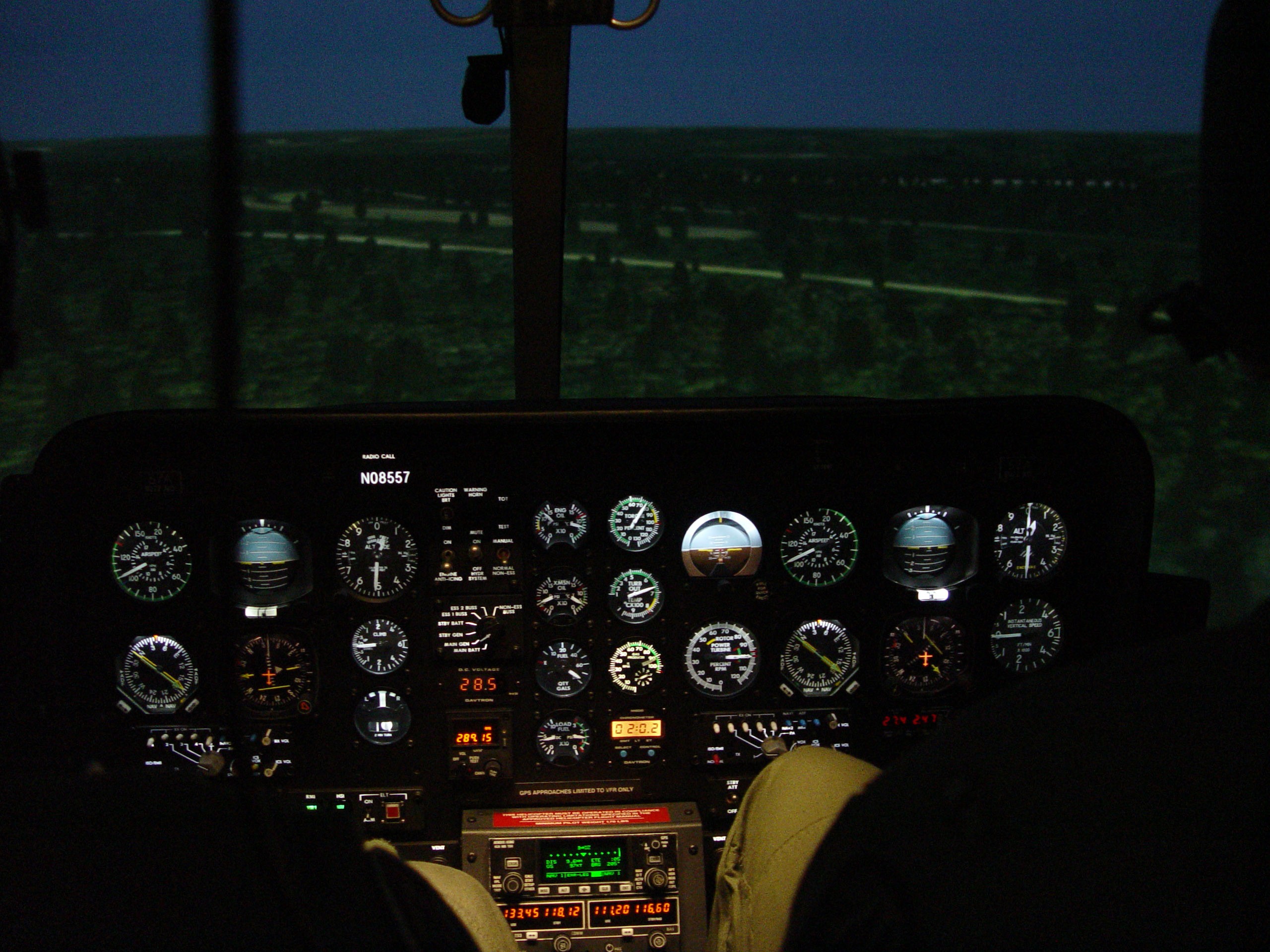FORT RUCKER, Ala. -- Flight School XXI students recently surpassed a quarter-million hours in TH-67 Creek flight simulation, according to Directorate of Simulation officials.
Kevin Hottell, Flight School XXI Simulation program manager, said the 250,000-hour milestone was significant because it shows how efficient the simulators are for students.
"We made the goal in just over five years," he said. "The simulators were running at 99 percent efficiency, which is great. Very few flight hours were deferred during that time."
Using simulators to train pilots here has saved the U.S. Army Aviation Center of Excellence and the Army money in numerous ways, said Dan Farley, Warrior Hall Operations Team manager.
"It costs about half as much to run a simulation as it does to fly an actual helicopter for the same amount of time," he said. "It's simple math to see how well that works."
Simulation also helps keep Soldiers and aircraft safe while pilots go through training here.
"We can simulate any type of conditions the pilots might face in the real world," he said. "By simulating flights, it allows pilots to get used to all the different situations they might face without putting them or an aircraft at risk."
All instrument training within the aircraft is initially conducted using simulators, said Farley.
"With the simulation, we can show the Soldiers everything they did during a flight," he said. "We can run back over all the things they did right or wrong and it makes for a more effective learning environment."
Training under various weather conditions is also another benefit of the simulators, Farley said.
"If a Soldier arrives here in March, they'll be training during some of the hotter months in Alabama," he said. "Practicing things like icing conditions would be pretty difficult in that weather. It doesn't matter when they start. We can make snow, put clouds really low to the ground or create really hot temperatures. In the virtual world, we can adjust all the parameters to get the training they need and make it as efficient as possible."
While simulation is meant to train pilots, it isn't meant to fully replace actual flight time in an aircraft, Hottell said.
"It doesn't replace actual helicopter flight time," he said. "However, it's a fantastic tool to have."
Lt. Col. Joe Matthew, 1st Battalion, 223rd Aviation Regiment commander, said he has seen positive results in pilots who have gone through the simulated training.
"It has allowed students to do a lot of things without actually having to use real helicopters," he said. "It's a very good learning concept. When they get to the actual aircraft, they're more knowledgeable."


Social Sharing